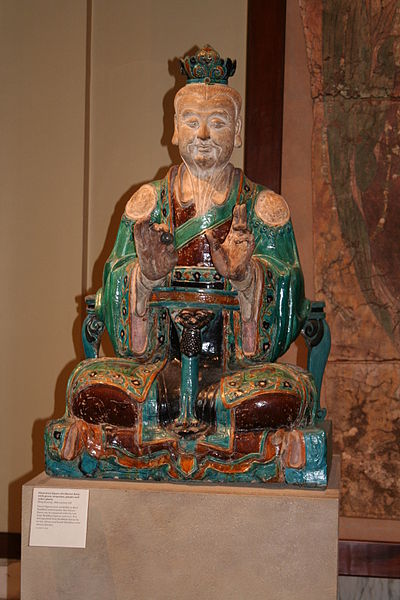The Analects, also known as the Sayings of Confucius, is an ancient Chinese philosophical text composed of sayings and ideas attributed to Confucius and his contemporaries, traditionally believed to have been compiled by his followers. The consensus among scholars is that large portions of the text were composed during the Warring States period (475–221 BC), and that the work achieved its final form during the mid-Han dynasty. During the early Han, the Analects was merely considered to be a commentary on the Five Classics. However, by the dynasty's end the status of the Analects had grown to being among the central texts of Confucianism.
A page from the Analects
Fragment from the manuscript of Analects, text by Kong Anguo with commentary by Zheng Xuan. This fragmentary manuscript has been found at Mogao Caves. It is dated era Longji, 2nd year (i.e. 890 AD), but it could be copied in the middle of the 8th century. Bibliothèque nationale de France
The Analects, from Östasiatiska Museet in Stockholm
A copy of He Yan's commentary on the Analects, with a sub-commentary by Xing Bing, printed during the Ming dynasty
Chinese philosophy originates in the Spring and Autumn period and Warring States period, during a period known as the "Hundred Schools of Thought", which was characterized by significant intellectual and cultural developments. Although much of Chinese philosophy begun in the Warring States period, elements of Chinese philosophy have existed for several thousand years. Some can be found in the I Ching, an ancient compendium of divination, which dates back to at least 672 BCE.
Yin and Yang symbol with the bagua symbols paved in a clearing outside of Nanning City, Guangxi province, China
Kong Fuzi (Latin: Confucius)
Chinese glazed stoneware statue of a Daoist deity, from the Ming dynasty, 16th century
The Sakyamuni Buddha, by artist Zhang Shengwen, 1173–1176 CE, Song dynasty








